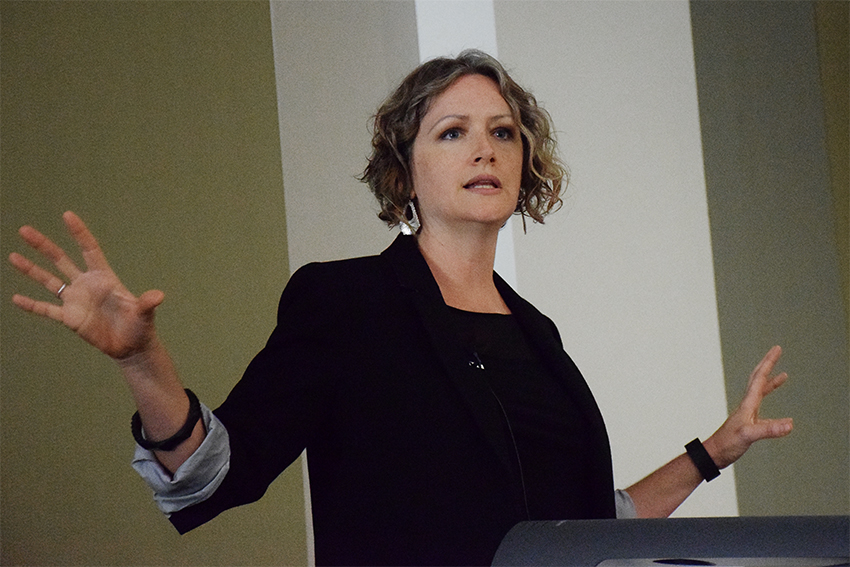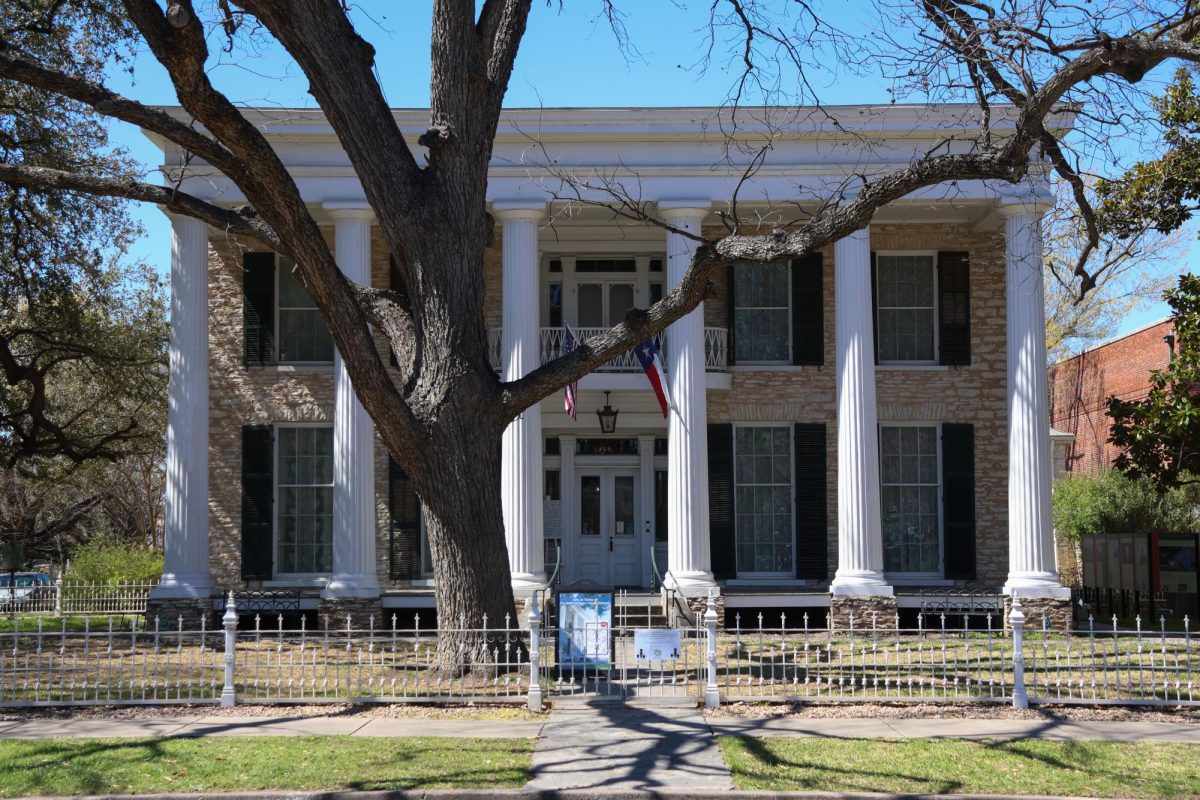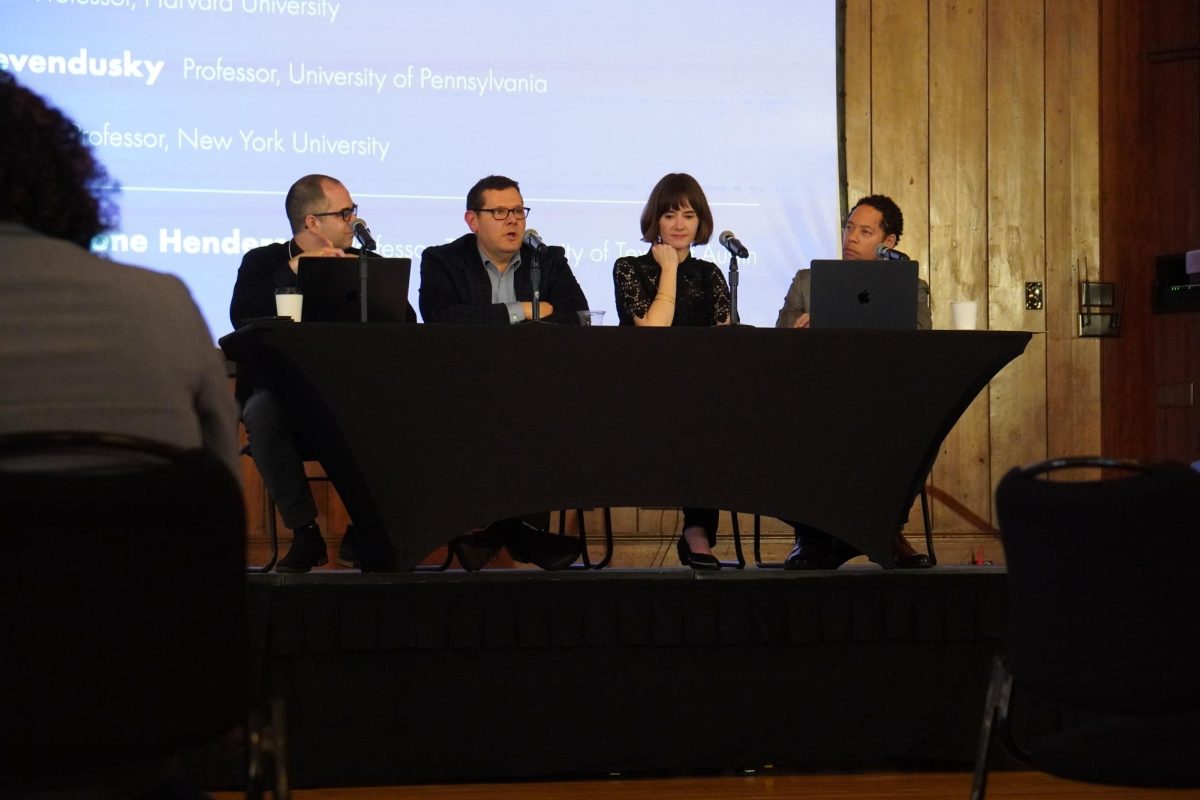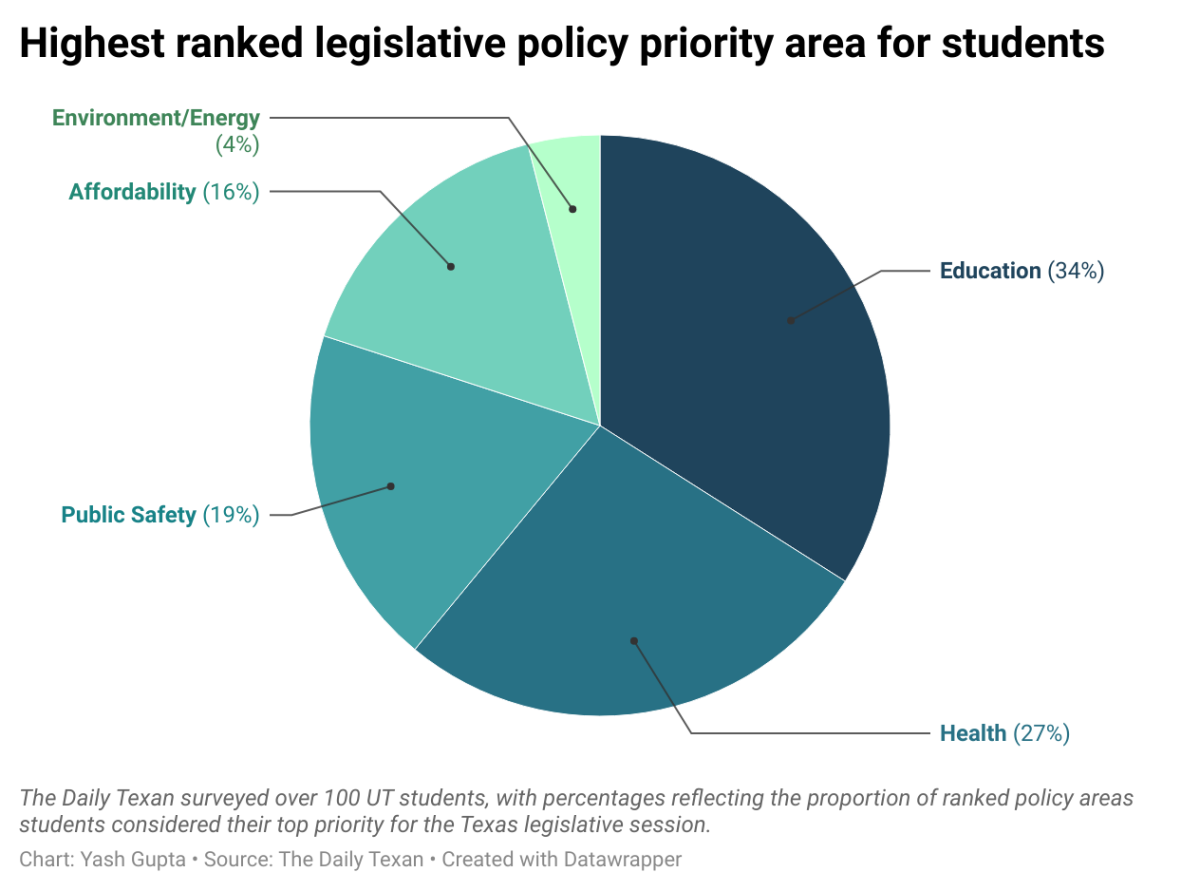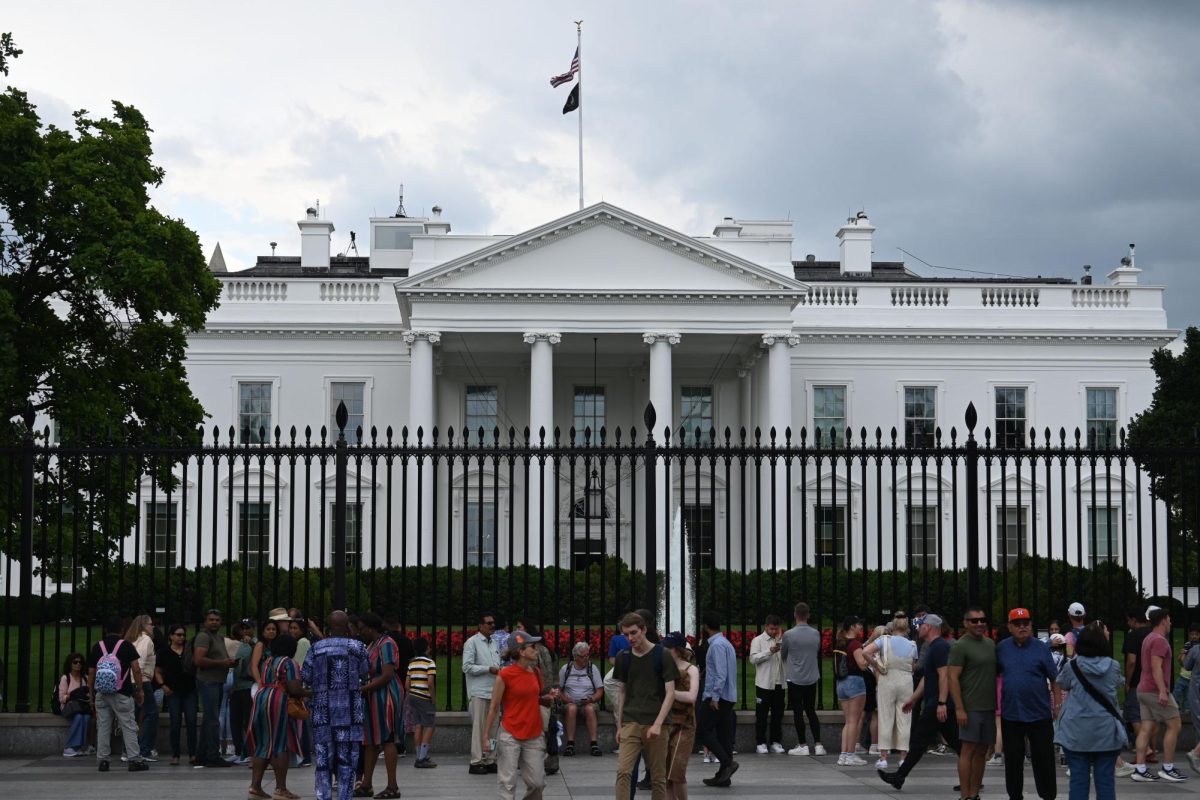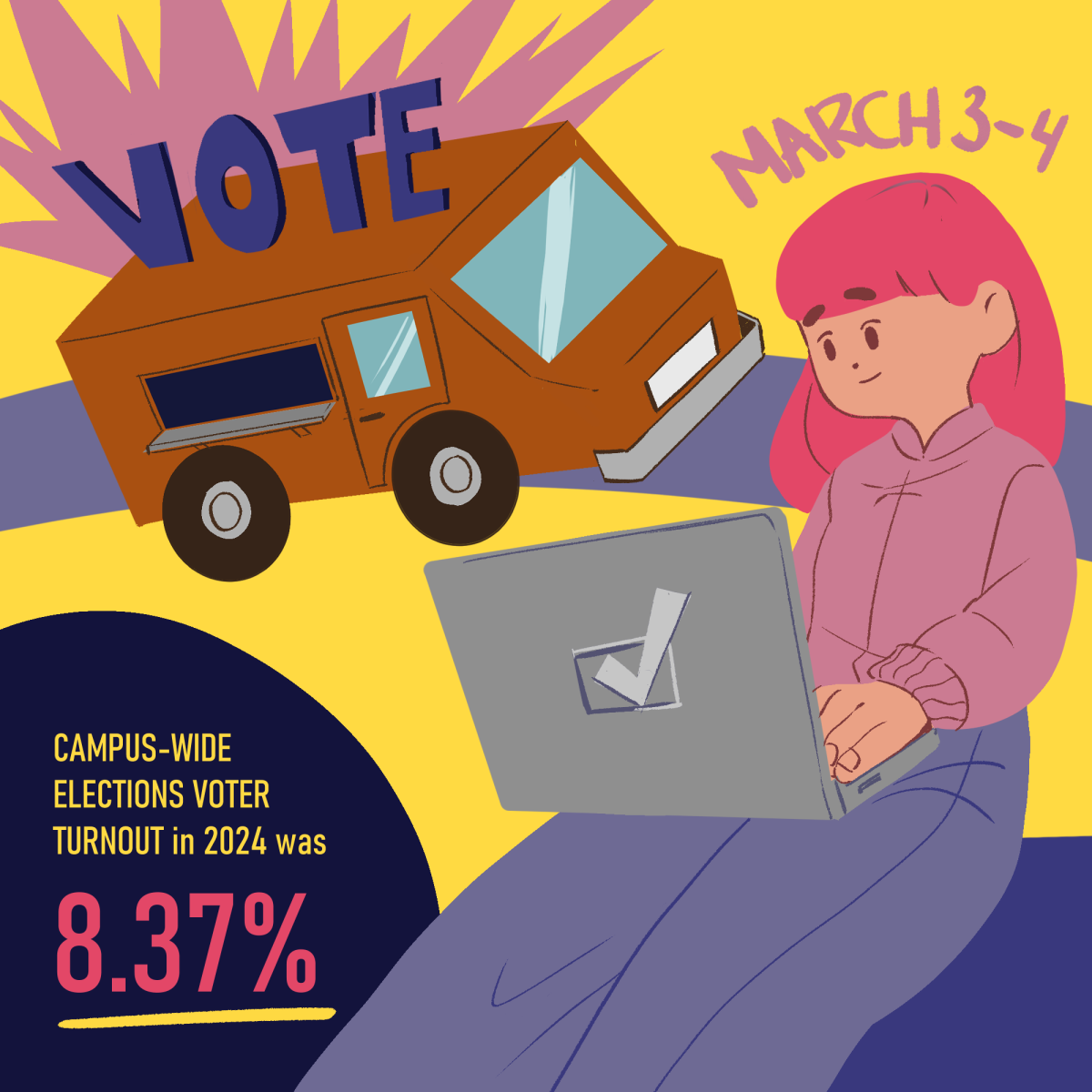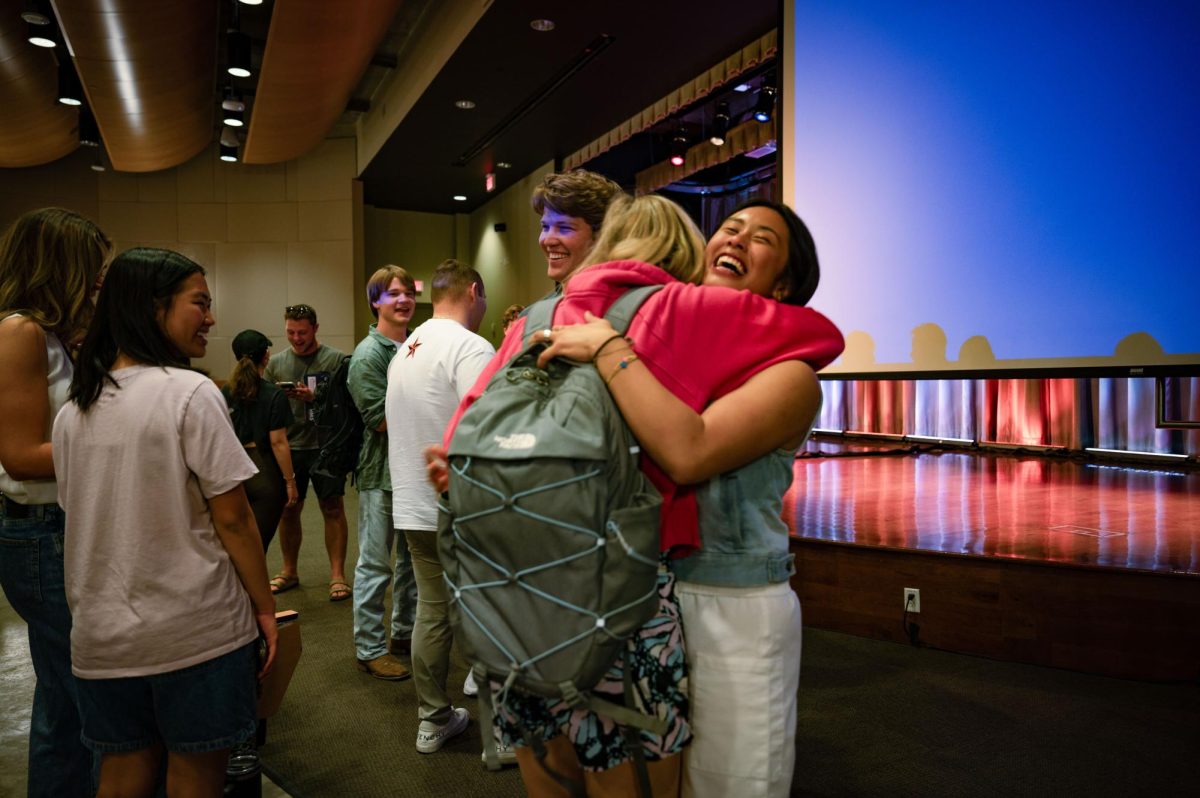Let’s talk sex. A researcher presented her work Thursday on why homosexual encounters between straight white men have been widely normalized in American culture.
Jane Ward, gender and sexuality studies associate professor from the University of California, Riverside, said her research found that heterosexual white men engage in gay acts in fraternity and military hazing practices, online personal ads and popular culture. Ward said these acts are accepted because they are considered bonding or right-of-passage exercises. Still, Ward said nobody questions their sexuality, while men of color are questioned when they engage in the same acts.
“When straight white men approach homosexual sex in the ‘right’ way, it functions to bolster not only their heterosexuality but also their masculinity and whiteness,” Ward said.
Ward is one of three candidates for a senior position at the Center for Women’s Studies and the second to present her research. Ward included many examples of instances in which heterosexual men engaged in homosexual contact without any consequence to their perceived masculinity. This raises the question about what distinguishes heterosexual from homosexual men and about who sets the standard for this, Ward said.
“What sets these scenes apart, these scenes of homosexual encounters between heterosexual men and those that we might call … gay, is not the specific sex act involved … but the cultural narratives that circulate around these acts,” Ward said.
Ben Carrington, chair of the search committee for the Center of Women’s and Gender Studies, said Ward presented a fresh take on the intersectionality of race and sexual perception.
“Jane Ward’s work is ground breaking,” sociology associate professor Carrington said. “Centering on whiteness and thinking about heterosexuality in relation to whiteness, is not often put quite in the way she does.”
UT alumnus Eddie Martinez, who took courses in women’s and gender studies, said Ward’s research provided the opportunity to look into a population who isn’t frequently examined.
“From a sociological standpoint, this [kind of] behavior isn’t untouched, but it highlights a different demographic … because straight white people aren’t exactly put on a microscope as often,” Martinez said.
Each candidate must be evaluated by the department for which they will be working before the Center selects whom to hire. The next candidate will present in two weeks.

